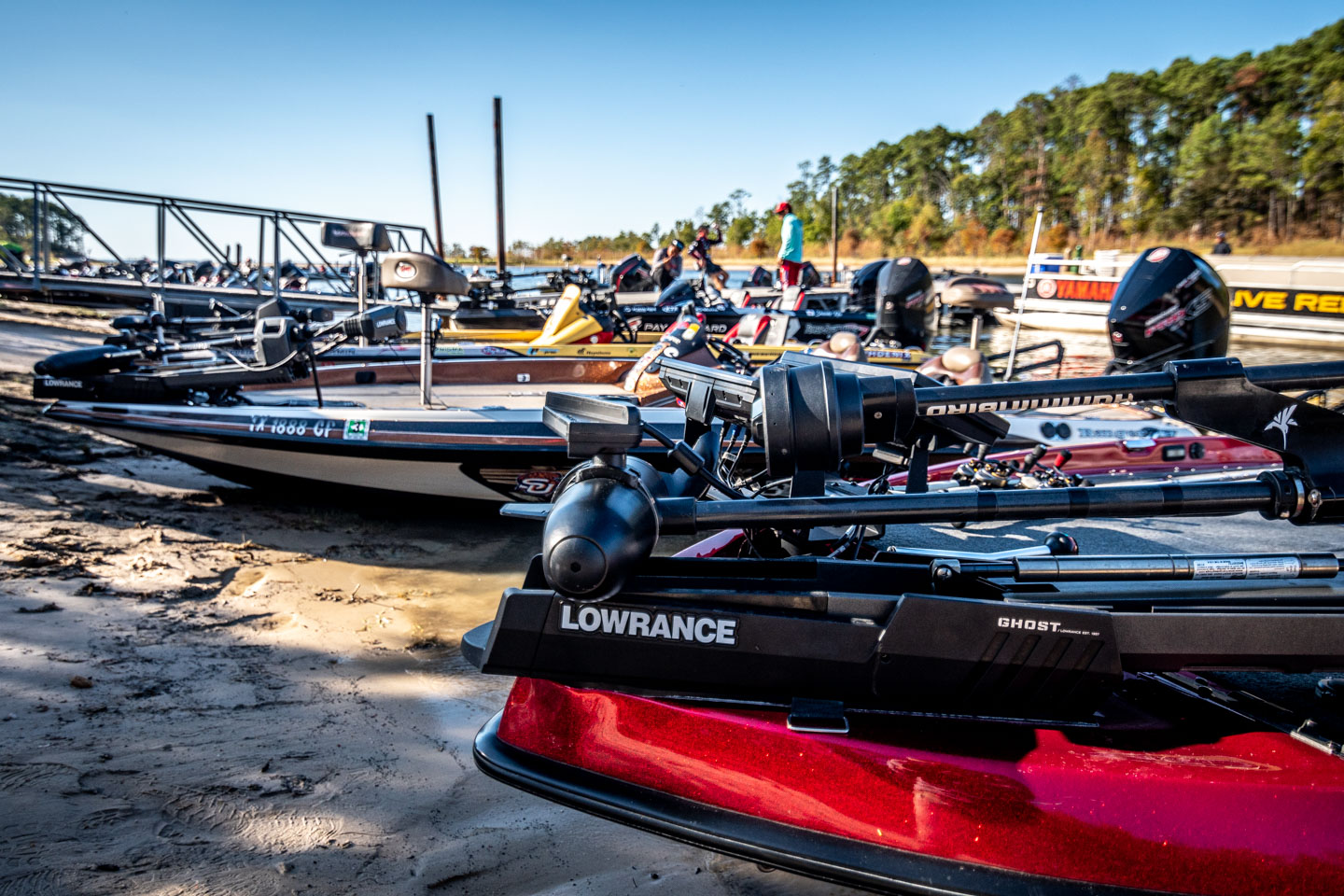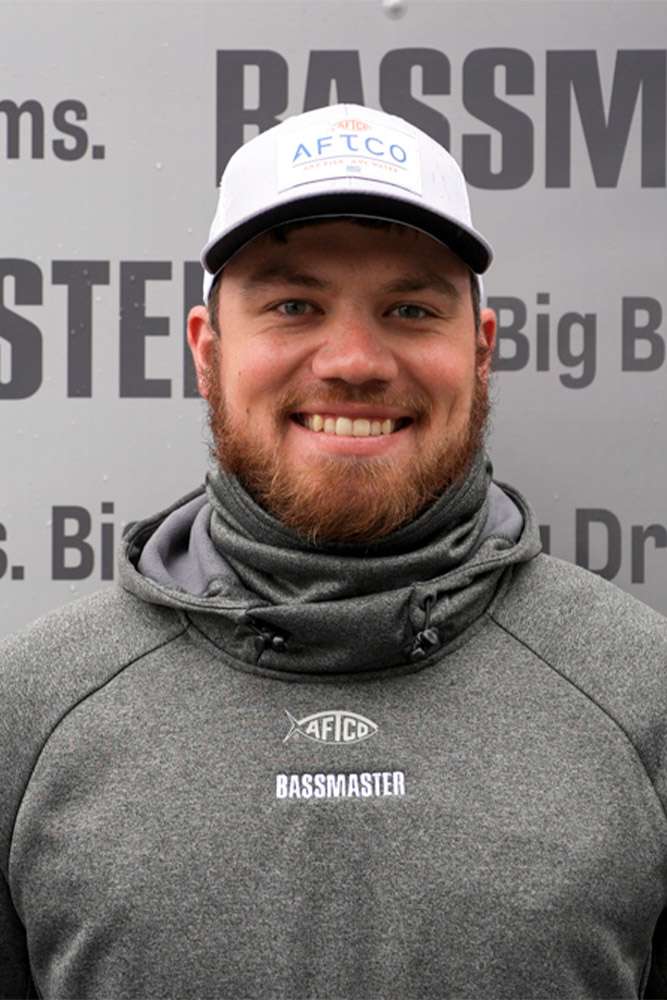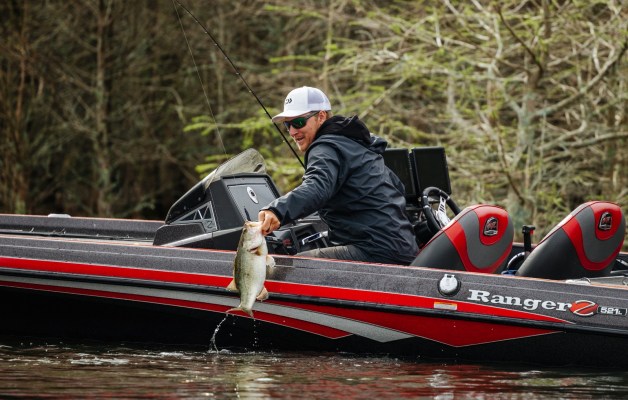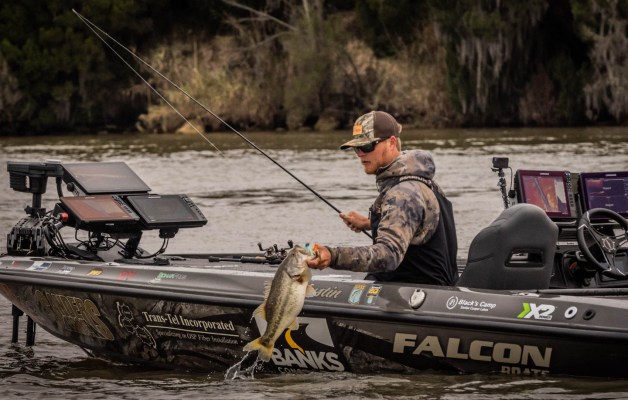
JASPER, Texas — It’s safe to say Sam Rayburn is not playing nice with the St. Croix Bassmaster Central Open presented by Mossy Oak Fishing field this week.
Only 70 anglers in the 188 boat field landed limits and 29 anglers failed to catch a bass. Even Bassmaster Elite Series pro and local hammer Keith Combs struggled a bit to find anything consistent on a lake he is always competitive on. While his 14-pound, 8-ounce bag is far from where he wanted to start this event, he is in 18th place, giving credence to just how important solid limits will be this week.
The eight-time Classic qualifier has a theory on why it is so tough. Even with the colder nights during the end of practice and the start of Day 1, water temperatures are well into the 70s still and that has a lot of the bass scattered about and not relating to anything other than baitfish.
“We haven’t gotten into any kind of a fall bite. We are just in a long summer bite,” Combs explained. “The lake is full of fish, but a lot of them are just swimming around with the shad. There are shad in the creeks and shad on the flats, and a lot of these fish become tough to target. Once it gets colder, the shad will start relating to the channels, then we can target them.”
While Kyle Austin is no local, he agrees with the water temperature as high as it is, the bass are acting more like he imagines they would in September. Without the 7-12 largemouth he landed with 10 minutes to go, which is currently leading the Phoenix Boats Big Bass race, he also would have been around the weight class Combs is in.
“When I left Lowcountry South Carolina, the water temperature was 70. Then when I got here it was 78,” Ausitn said. “It has gone down a little to 73-74 but it is still pretty warm. It is fishing more like September than October.”
Instead, Austin sits second with 20-2 and 12 ounces behind leader Tyler Rivet.
Expectations coming into Rayburn haven’t quite matched reality for many of the top anglers, whether that is in terms of cover, water temperature or size. The lake is 6 feet low as well, leaving lots of areas high and dry. Here are what some of those anglers had to say about Day 1.
Tyler Rivet (1st place, 20-14)
A big surprise for a lot of anglers coming into this event is the lack of production in the abundance of hydrilla in Rayburn. Rivet was one of those anglers, but on Day 1 he left the grass behind for the most part. Several different baits played a role in his performance, including a jerkbait. His biggest bass clocked in at 6-13.
“Everything is matted over, but it isn’t a good mat. It isn’t setting up well,” Rivet said. “You can punch, but you have 50 yards of grass behind you fading into the channel. So I got away from the grass. I caught my big one on a shallow brush pile and the rest came LiveScoping. I did this in practice and couldn’t get bites. Today it happened. The wind finally calmed down, and the sun came out.”
Rayburn is fishing much differently than he has experienced in the past in large part because of the low water conditions.
“You have to think about where the fish would be and where they want to be right now,” Rivet said. “They can’t be there, so they are going to be at the closest thing to them and might back out a little more. I thought we would come in here and whack them punching and throwing a ChatterBait, and it is not happening.”
Kyle Austin (2nd place, 20-2)
Unlike a lot of anglers, Austin knew exactly what he was going to do at Sam Rayburn: target brush. So far that strategy has paid off. Not only is he fishing his strengths, he has noticed the bass in Sam Rayburn look and act exactly like the bass in his home of Santee Cooper Lakes.
“At home I don’t fish deeper than 10 feet. The big ones love that (depth range),” Austin said. “Even in the fall, if you see fish suspended over 30 feet, they are trying to be in that 10-foot water column. That’s where the big ones like to roam.”
While he has kept each depth range honest, the 7- to 12-foot range has been the most productive, and there were a lot more fish around his shallow brush piles today than there were all of practice.
“I tried everything today,” he said. “I went real deep and real shallow, but 7 to 12 foot is definitely my go-to. I am fishing one of my strengths. Every top 10 I have made has been fishing shallow brush. It is something that gets overlooked, like stuff in 5 or 7 feet of water. It is hard to find on sidescan. You have to spend the time on front-facing sonar to really find them.”
Garrett Paquette (3rd place, 19-8)
Paquette ran the gamut on Day 1, fishing shallow, deep and everywhere in-between. A couple good bites early in the morning allowed him to slow down and explore a little more. He also landed a near 7-pounder late in the day.
Paquette entered practice thinking he would strictly be punching grass. That has not been the case at all.
“I came here intending to punch grass, and I have caught fish doing literally everything else in my tacklebox,” he said. “I’m still a little mad about that. Some of the grass looks amazing, but I couldn’t figure it out.”
Now, he isn’t banking on one thing, instead covering as much water as possible.
“Practice was random. I caught six or seven fish between 4 and 7 pounds, but they were all on different techniques and different patterns,” Paquette said. “I came into today feeling like it was another practice day. It was really just seven keepers and two good bites. For me it is about covering water. I am trying to play the percentages. Just running and running and trying to get in front of one.”
Tristan McCormick (4th place, 19-0)
The phrase “it almost yanked the rod out of my hands” has become a bass fishing cliche, but McCormick’s biggest bass of the day, a 6-pounder, literally yanked the rod out of his hands as it attempted to avoid the boat.
“I got her all the way to the top, and I saw it was a big one. As soon as she went back down she surged the other way and jerked the rod out of my hands. No exaggeration, that rod was about to go to the bottom of the lake. I dove down to get it. I don’t know how the fish didn’t come off.”
While Combs sort of lamented the fact the bass were roaming, it played right into McCormick’s hands as a forward-facing sonar guru. Coming off a win at Lake Hartwell in the final Southern Open, the Bethel University graduate is riding this momentum as far as he can take it.
“With the water being low, it has them grouped up and chasing a lot of bait. They are super skinny. That big one I had should have been a 7-pounder. They are trying to feed up, and I am chasing them around. I fished all new water because I had nothing else to do. I have a couple good areas, but they don’t start biting until 10:30 a.m. Once the cool weather goes away, they start getting more active.”
Hayden Newberry (5th place, 18-3)
As a traveling nurse, Newberry spent some time in Texas and fished Sam Rayburn a couple times and that experience helped fuel his Day 1 performance. The areas he fished in the past are producing again this time around. The week has surprised him in one aspect.
“If anything, this week has surprised me because it has fished better to my strengths than I thought it was going to,” Newberry said. “I like to fish shallow, and I didn’t think that was going to work out this week to catch good fish.”
Austin Cranford (8th place, 16-3)
Cranford only had seven bites all day, but they were the right ones to lift him inside the Top 10. All of his bites came offshore, most of them coming from a specific area. Last time the Opens were at Rayburn, Cranford flipped grass and was determined not to do that again this time around. While Cranford caught them how he expected, he didn’t expect it to be this tough.
“I thought it would be a little easier than this,” he said. “They are kind of in a funk and don’t want to bite. But, if you put it in front of their face over and over again, you’ll (make them mad). They are kind of scattered, but it seems like if you find one of those places there will be multiple there. But they are in very small places.”





